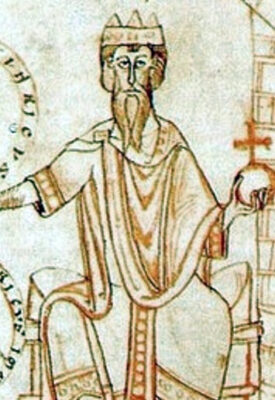Childhood
As a Margraviate (border province) & boundary of the Holy Roman Empire, Antwerp would see its defense walls become bigger and stronger. In 1076 the German King & future Emperor Henry IV in a move that would elevate its importance decided to seize the lands of the Duchy of Lower Lorraine from the hands of the appointed heir Godfrey of Bouillon, and offer them to his two-year-old son Conrad II. It was a double wager for the Emperor who chose to have direct control of the buffer duchy until his son would come of age. That way the Emperor would test the leadership quality of his son and the vassal prince’s loyalty to him.



At the same time, the neighboring West Frankish Duchy of Flanders emerged as one of the strongest in feudal Europe. Its towns Ypres, Ghent, and Bruges experienced phenomenal economic growth based on trade & cloth production. Bruges, a city that would often be referred to as ‘Venice of the North became the capital of the Duchy in 1093 & a trade terminus for ships coming from all parts of Europe.
After the death of the marquis of Antwerp Godfrey of Bouillon in the First Crusade, the Margraviate of Antwerp & the Duchy of Lower Lorraine was united once again in 1106. Between 1182 and 1184 Godfrey III, Count of Louvain, Margrave of Antwerp, and Duke of Lower Lorraine participates in a crusader campaign in Jerusalem while Emperor Frederick Barbarossa grants him the title Duke of Brabant in a feudal promotion that would be mostly enjoyed by his son Henry I, who in 1190 becomes Duke of Brabant and Antwerp’s ruler.



The city started to develop in concentric cycles, protected by defensive moats/canals that surrounded the typical medieval pattern of its narrow streets, a layout still identifiable in the weaving of its historic center. New guild halls like the Vleeshuis (Meat House) are built to facilitate commerce.
In September of 1312, a few days before his death, John II, Duke of Brabant would sign the establishment of an assembly that could control the decisions of the duke, to bequeath a duchy of solid peaceful ties between his heir and son John III and his subjects. The so-called Charter of Kortenberg would be the first truly democratic effort in northern feudal Europe, a charter more liberal in nature than its somewhat more famous Magna Carta that had been signed by the English King at the beginning of the 13th century.




